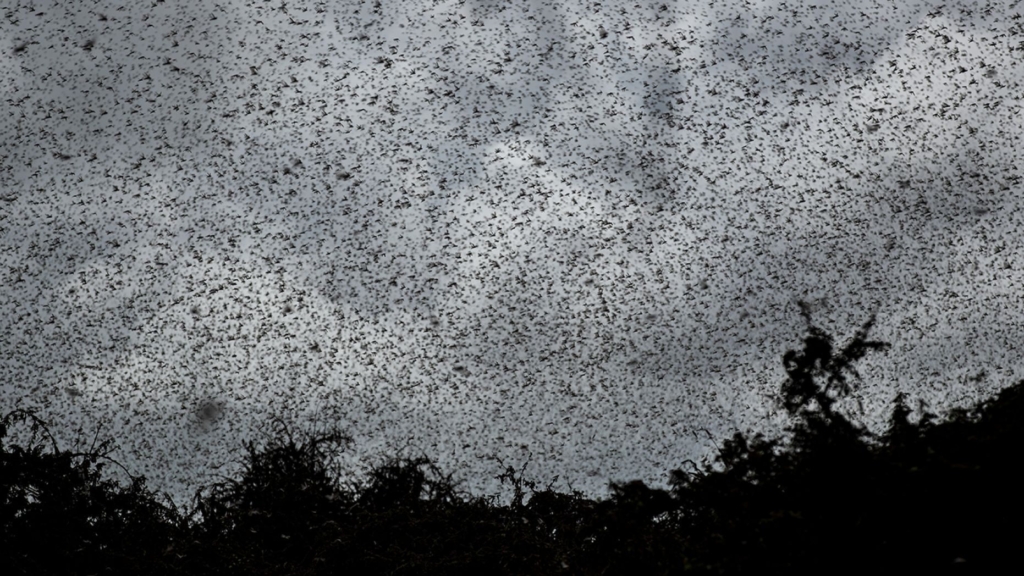Scientists Project 400-Fold Increase In E. Africa Locust Swarms By June
 Swarms of desert locusts fly above trees in Katitika village, Kitui county, Kenya, on Friday, 31 January 2020. Photo: Ben Curtis / AP Photo
Swarms of desert locusts fly above trees in Katitika village, Kitui county, Kenya, on Friday, 31 January 2020. Photo: Ben Curtis / AP Photo
East Africa is in the midst of a crisis that sounds like something out of the Book of Exodus: A plague of locusts is spreading across the region, threatening the food supply of tens of millions. City-sized swarms of the dreaded pests are wreaking havoc as they descend on crops and pasturelands, devouring everything in a matter of hours. The scale of the locust outbreak, which now affects seven East African countries, is like nothing in recent memory.
The insects behind the mayhem are desert locusts, which, despite their name, thrive following periods of heavy rainfall that trigger blooms of vegetation across their normally arid habitats in Africa and the Middle East. Experts say a prolonged bout of exceptionally wet weather, including several rare cyclones that struck eastern Africa and the Arabian Peninsula over the last 18 months, are the primary culprit. The recent storminess, in turn, is related to the the Indian Ocean Dipole, an ocean temperature gradient that was recently extremely pronounced, something that’s also been linked to the devastating bushfires in eastern Australia.
Unfortunately, some experts say it may be a harbinger of things to come as rising sea surface temperatures supercharge storms and climate change tips the scales in favor of circulation patterns like the one that set the stage for this year’s trans-oceanic disasters. “If we see this continued increase in the frequency of cyclones,” says Keith Cressman, senior locust forecasting officer with the Food and Agriculture Organization, “I think we can assume there will be more locust outbreaks and upsurges in the Horn of Africa.”
 Map showing the progression of locust swarms in East Africa, 2018-2020. Graphic: National Geographic
Map showing the progression of locust swarms in East Africa, 2018-2020. Graphic: National Geographic
The worst of the outbreak may be yet to come. The fall rains, Cressman says, “tipped the situation into something not only very usual but very dangerous” by effectively enabling at least another two generations of locust breeding. By June 2020, he fears the desert locusts will have increased their numbers 400-fold compared with today, triggering widespread devastation to crops and pastures in a region that’s already extremely vulnerable to famine. Over 13 million people in Djibouti, Eritrea, Ethiopia, Kenya, and Somalia experience “severe acute food insecurity,” according to the FAO, while another 20 million are on the brink.
EDIT
https://desdemonadespair.net/2020/02/hundreds-of-billions-of-locusts-fueled-by-conflict-and-climate-change-are-swarming-east-africa-400-fold-increase-in-their-numbers-by-june-2020-projected.html

